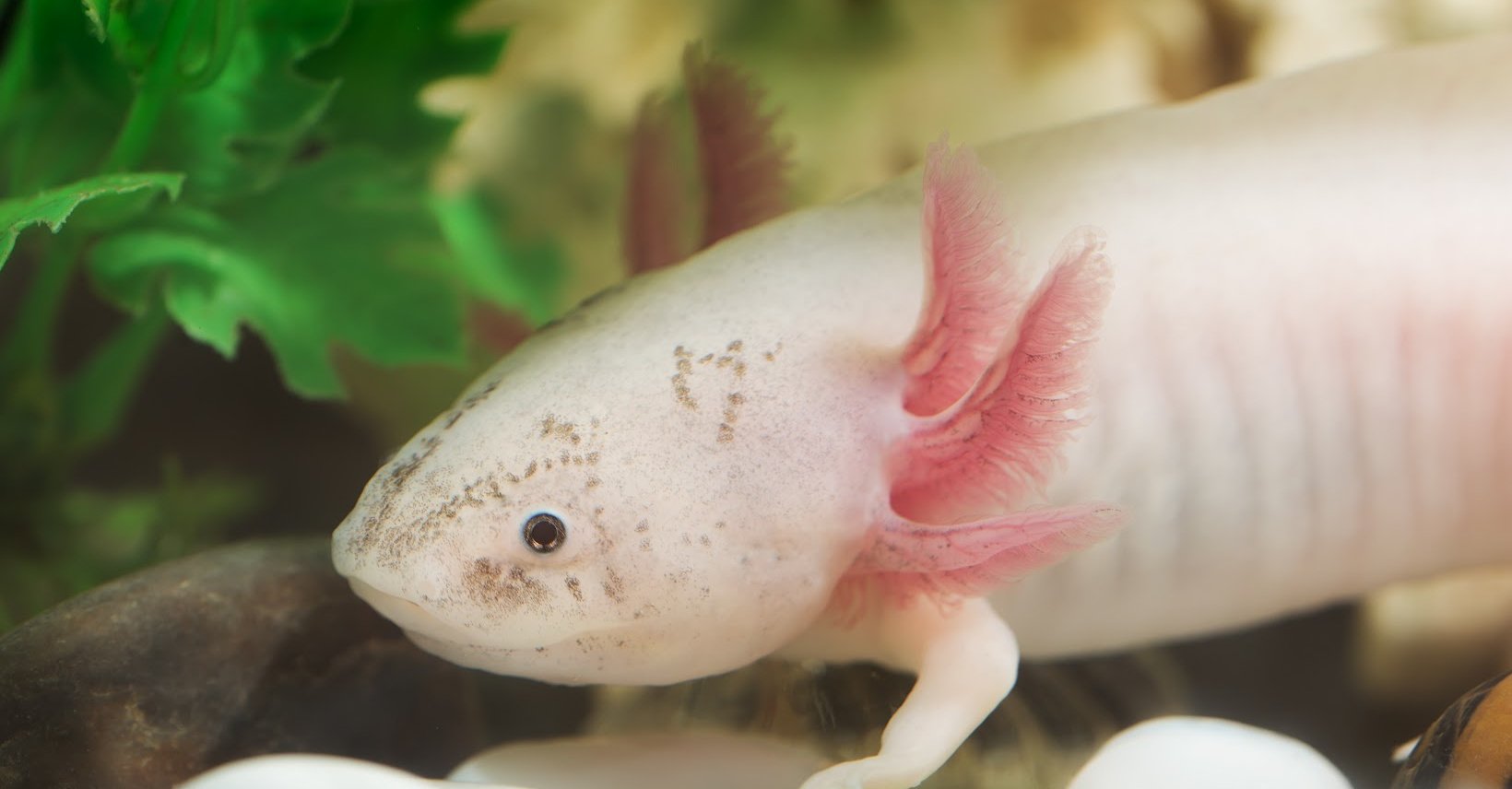
Axolotls
Care- A 20-gallon long - 40-gallon tank is a great size for an axolotl. Fill the aquarium with water the same way you would fill it for fish. Tap water is safe to use if you condition it as you would for a freshwater fish tank. If you do not condition the water, chlorine and other chemicals in the water can harm or kill your axolotls.
Keep a lid on the aquarium at all times. Axolotls will sometimes jump out of their tanks. Make sure to provide your axolotl with an appropriate hiding place. Anything that provides shelter makes a good place for axolotls during the day. You can use flower pots, hollow decorations, or a safely stacked rock cave.
An external canister filter is necessary to keep your axolotl’s water clean and healthy. You can purchase this type of filter at a local pet store. Any filter you install should have a spray bar or other outlet to control water flow. While axolotls need subtle water flow, they can get stressed by actively flowing water.
The bottom of an axolotl tank should be lined with large fish tank pebbles (larger than the axolotl's head) or fine sand (fine grain sand being the ideal substrate). Axolotls do not need a lot of light to thrive, so try to minimize how often you keep their light on.
Because axolotls are cold-blooded animals, you do not need a heater, though if your house is kept at a warmer temp, you may need an aquarium chiller. The proper temperature for an axolotl hovers between 60° and 65° Fahrenheit. If exposed to temperatures above 74 degrees, they will develop heat stress.
The main foods your axolotl will eat are earthworms from pesticide-free soil, frozen bloodworms, or night crawlers. You will want to feed them as much as they can eat for half an hour every other day. You’ll also want to replace 50 to 60 percent of the water in the tank once a week, and don’t place other animals in the tank with them. Older axolotls can prey on younger ones, so remove them using a net and place them in a separate aquarium.
Enrichments- Studies have shown that amphibians that are given a habitat that matches their natural one very closely live longer lives. (In an axolotl's case, this would be shallow, cool water, darkness, and lots of plant cover). Providing them with adequate hiding spots can help increase their lifespan, and moving the decor and hiding spaces around once in a while helps them a lot.
Axolotls are part of an ancient family of amphibians called Ambystomatidae that first appeared over 30 million years ago. Although these creatures were once found across much of North America, due to pollution and other environmental issues they now only exist in Xochimilco in Mexico City. Despite their prevalence in this region for centuries, axolotls are sadly now endangered due to habitat loss resulting from urbanization. An incredible feature that sets axolotls apart is their remarkable ability to regenerate lost body parts. After amputation or injury, axolotls have been known to completely recover a leg within a matter of weeks – sometimes even growing back two legs instead of the original one! This incredible capability has prompted extensive research on the mechanisms behind limb regeneration with hopes that this knowledge may eventually benefit humans with disabilities or injuries. In addition to being able to regenerate limbs, axolotls also possess an impressive capacity for self-healing when it comes to wounds. Through a process called wound epithelization , where cells divide rapidly at the site of damage and rebuild skin over time without forming scar tissue, any superficial cuts heal quickly without leaving any trace behind. Unfortunately due to rapid urbanization in Mexico City combined with pollution from nearby farms and factories, wild populations of axolotl have seen dramatic declines over the past few decades — leading some experts believe that wild populations could be extinct before long if immediate action isn’t taken soon. Fortunately there are conservation efforts underway such as educational campaigns designed to raise public awareness about local aquatic species like axlotols as well as creating protected areas for breeding so that future generations may still be able experience these incredible creatures. From their fascinating morphology down to their extraordinary regenerative abilities, it's no wonder why Axlotols have become so popular among people all over the world despite being an endangered species - it's truly inspiring just how resilient these creatures are! Hopefully with continued education and protection efforts we'll be able one day see this marine monster thrive once again in its natural habitat.
